The definition of self-organising teams
- A self-organising team is a concept which usually defines an assembly of individuals who are keen on achieving certain goals (Osherove, 2016).
- There are quite a few ingredients which may contribute to the development of a successful self-organising team (Osherove, 2016).
- Members of the team do not wait for the leader to distribute tasks (Nonaka, 1994)
- Coaching is necessary, control is not
- Each member of the team provides recommendations and ideas as they communicate with each other (Cooke, 2014)
A self-organising team is a concept which usually defines an assembly of individuals who are keen on achieving certain goals. Their key difference from common teams is the fact that these individuals are responsible for making the decisions and adapting their practice to the incessantly changing working environment. There are quite a few ingredients which may contribute to the development of a successful self-organising team (Osherove, 2016). First of all, the members of such teams are not intended to wait for the leader to disseminate tasks as they pull work for themselves. In a sense, this increases their level of commitment and develops a sense of proprietorship.
Also, the whole team manages its efforts as a group regardless of the type of assignment – allocation, estimation, delivery, revisions). Of course, coaching is still necessary, but self-organising teams do not depend on their leaders and are not subject to their control. In self-organising teams, individuals communicate more and tend to pledge serious allegiance to the project team and its key objectives (Cooke, 2014).

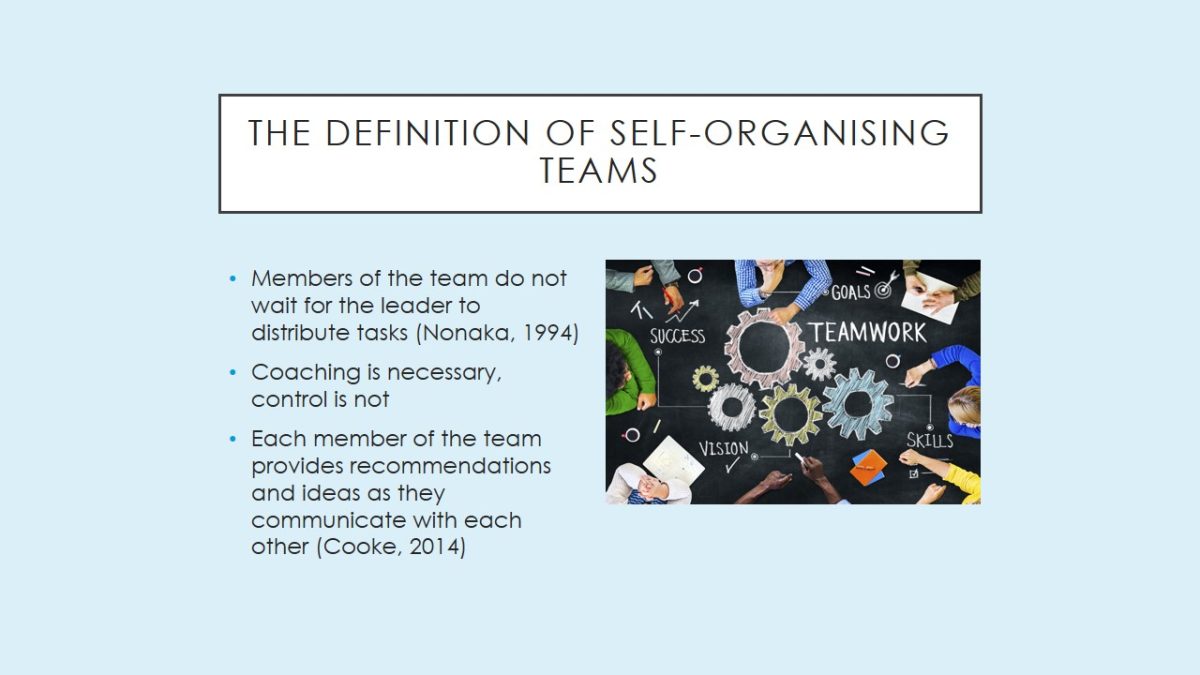
Five key traits of self-organising teams
- Competency.
- Collaboration.
- Motivation.
- Respect.
- Permanency.
Not a single team can normally exist when there is no trust among its members (Osherove, 2016).
The team has to be durable because alterations in the team composition have no practical value in the majority of the cases (Nonaka, 1994).
First, there is competency. Every member of the team has to possess certain knowledge in the given area of practice. Second, there is collaboration. A self-organised team should not be a mere group of individuals but an organism that functions harmoniously. For self-organised teams, teamwork is everything.
Third, self-organising teams need motivation because the latter is the ultimate key to achievements. Fourth, there should be respect (Osherove, 2016). Respectful team members are always ready to help their teammates to get their job done and believe in shared code rights. The last characteristic that is essential for a self-organising team is permanency. The team has to be durable because alterations in the team composition have no practical value in the majority of the cases.
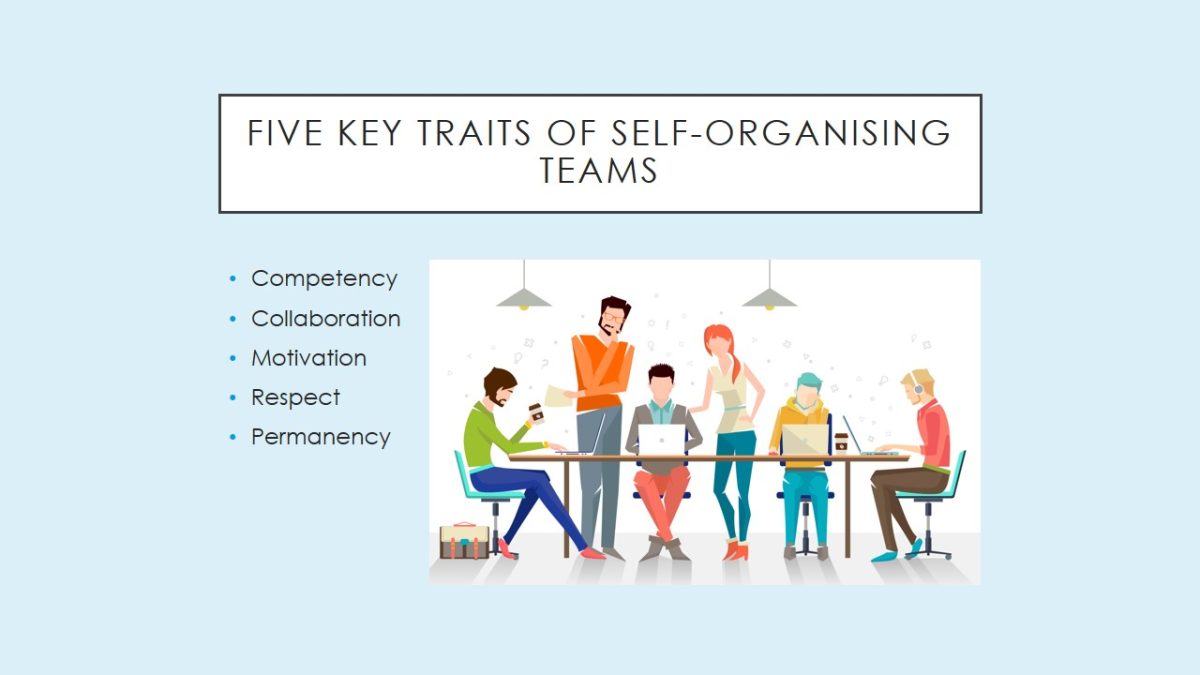
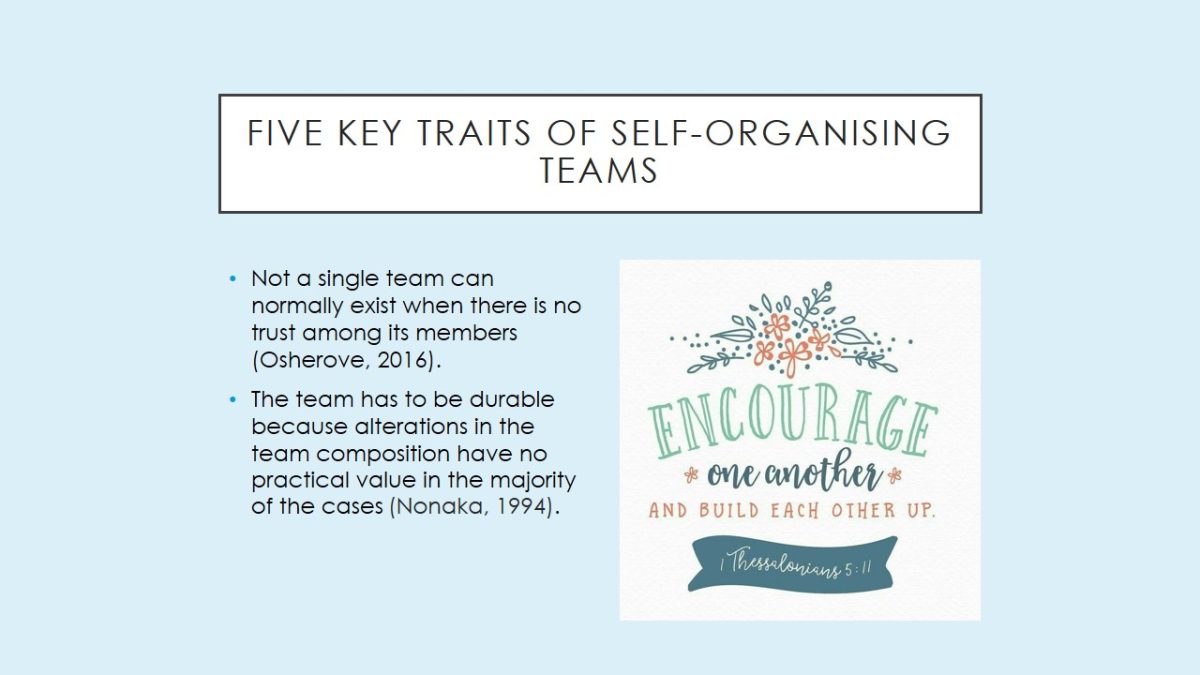
Creating a self-organised team
- The ScrumMaster is responsible for the creation of a self-organising team.
- Senior management is focused on the financial state of affairs and the organisation itself (Persily, 2014).
- The ScrumMaster has to improve collaboration practices within the team (Schwarz, 2013).
- Video conferencing or other management tools may be used.
- Individual valour should be dispirited.
- The organisation has to make sure that all the resources are also available to the team (Persily, 2014).
There is one person that is responsible for the creation of a self-organising team. This individual is also known as the ScrumMaster. Their key responsibility is to focus on deadlines and successful teamwork. Also, they may be substituted by senior management (the latter are focused on the financial state of affairs) and the organisation itself (Persily, 2014). One of the key responsibilities of the ScrumMaster is to make sure that the team is trained and coached properly (in fact, the ScrumMaster may be both a trainer and a coach here). Another important responsibility of the ScrumMaster is to improve collaboration practices within the team (Schwarz, 2013).
This can be done by means of video conferencing or other management tools. At the same time, the second actor (senior management) has to be careful because they do not want to interfere with the team’s workflow. The last variable of the equation, the organisation as a whole, has to make sure that all the resources that are necessary for the development of the infrastructure are also available to the team (Persily, 2014). This is expected to keep the members of the team constantly motivated and ready to provide. A self-organised team will prosper only when all these three elements work collaboratively.
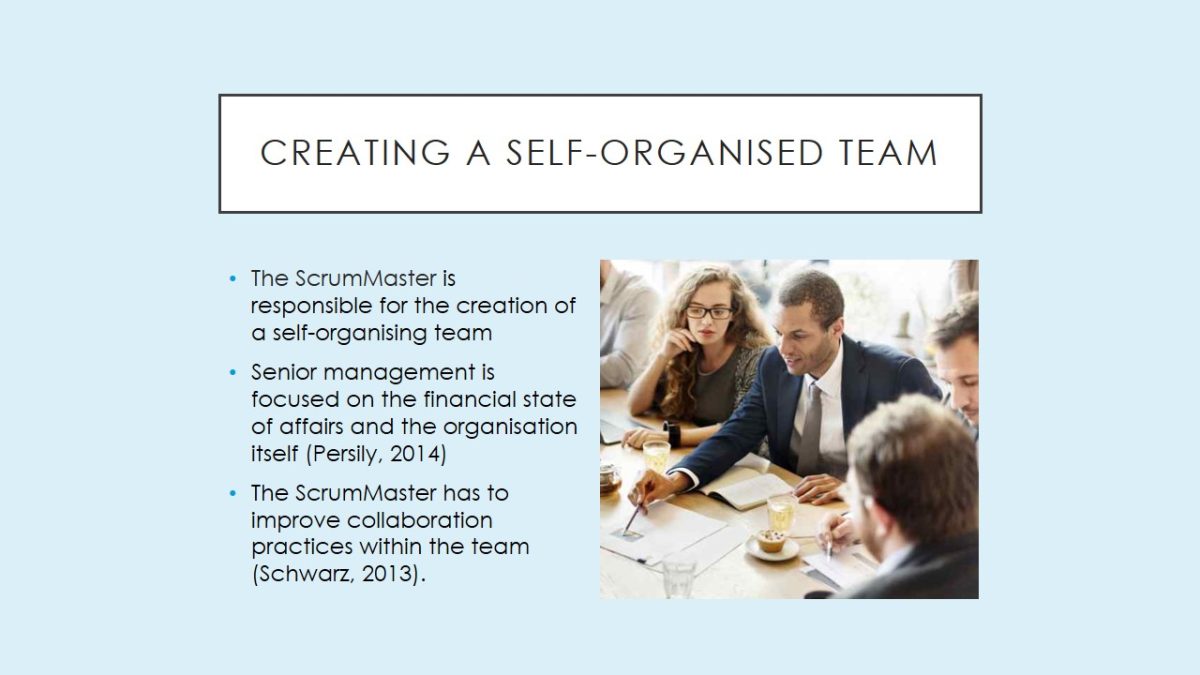
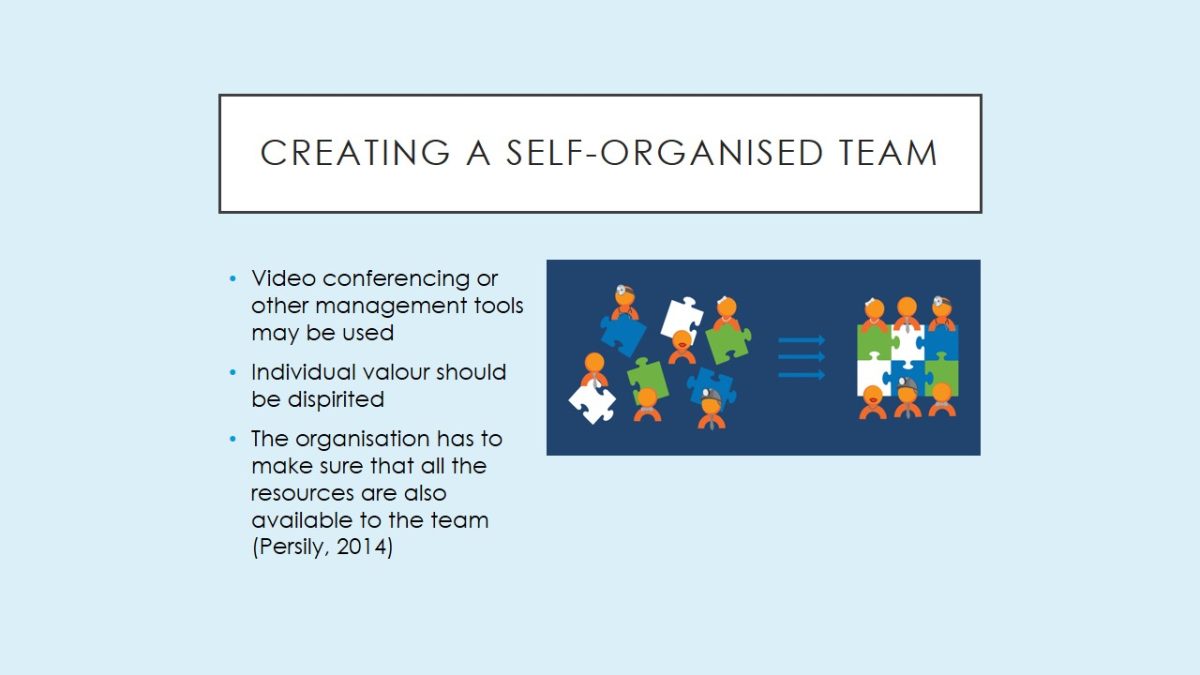
A three-step process
- It is critical to motivate the employees to develop a certain set of skills (Nonaka, 1994).
- The adoption of a certain coaching style at the time when the team got used to working together is also critical.
- Members of the team may feel a need for guidance at the beginning of their self-organising path (Osherove, 2016).
- Members of the team should be enjoying their partnership and help each other so as to develop new ideas.
- It may be necessary to keep the employees motivated so as to expose them to the process of continuous learning (Moran, 2015).
There are three key steps on the way to building a perfect self-organising team. First of all, it is critical to motivate the employees to develop a certain set of skills that will be in line with the needs of the organisation. Therefore, after this step, the team will be on the way to showcasing its self-organising behaviour. The second step involves the adoption of a certain coaching style at the time when the team got used to working together. This may be helpful if the ScrumMaster wants to see if there are any difficulties in teamworking. Members of the team may feel a need for guidance at the beginning of their self-organising path (Osherove, 2016).
There are several indicators which may be examined in order to realise whether the process of building a self-organising team is going to be successful. Members of the team should be enjoying their partnership and help each other so as to develop new ideas. At the end of the second step, the team almost becomes self-organised. Nonetheless, it is still critical to observe its behaviour and coach the members of the team if necessary. The third step revolves around the idea that the key objective of a self-organised team is to sustain this working mode. The administration may want to assign coaches that will help the team to develop and go to the next level. At this stage, it may be necessary to keep the employees motivated so as to expose them to the process of continuous learning (Moran, 2015).
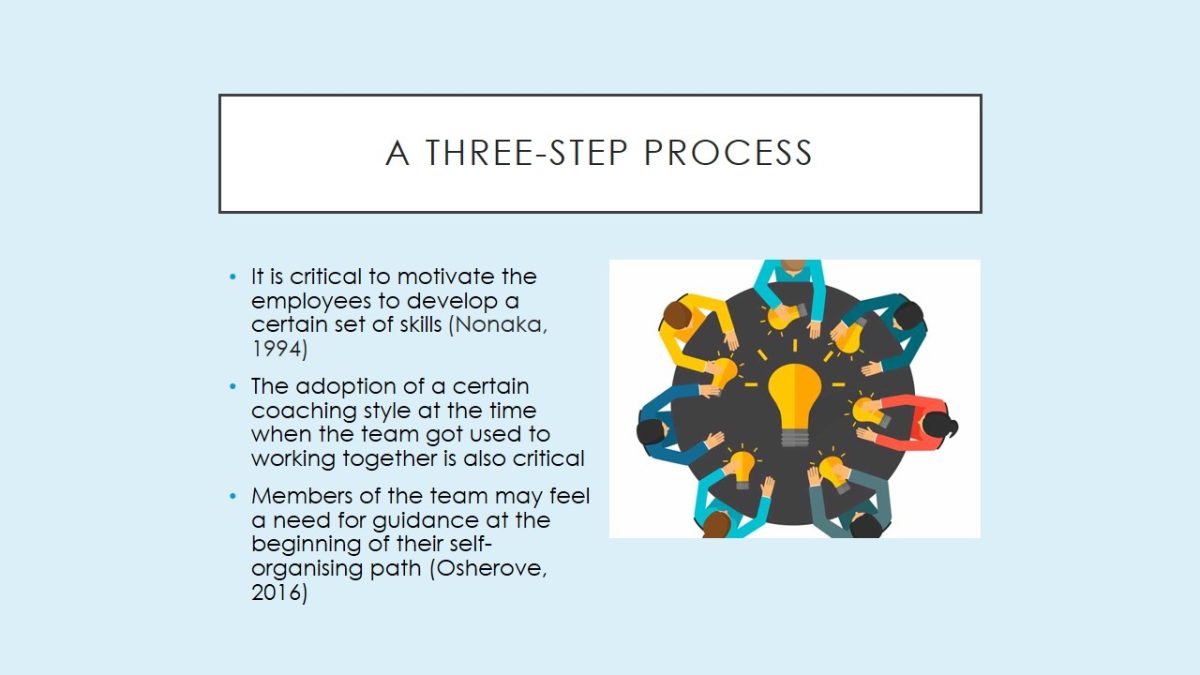
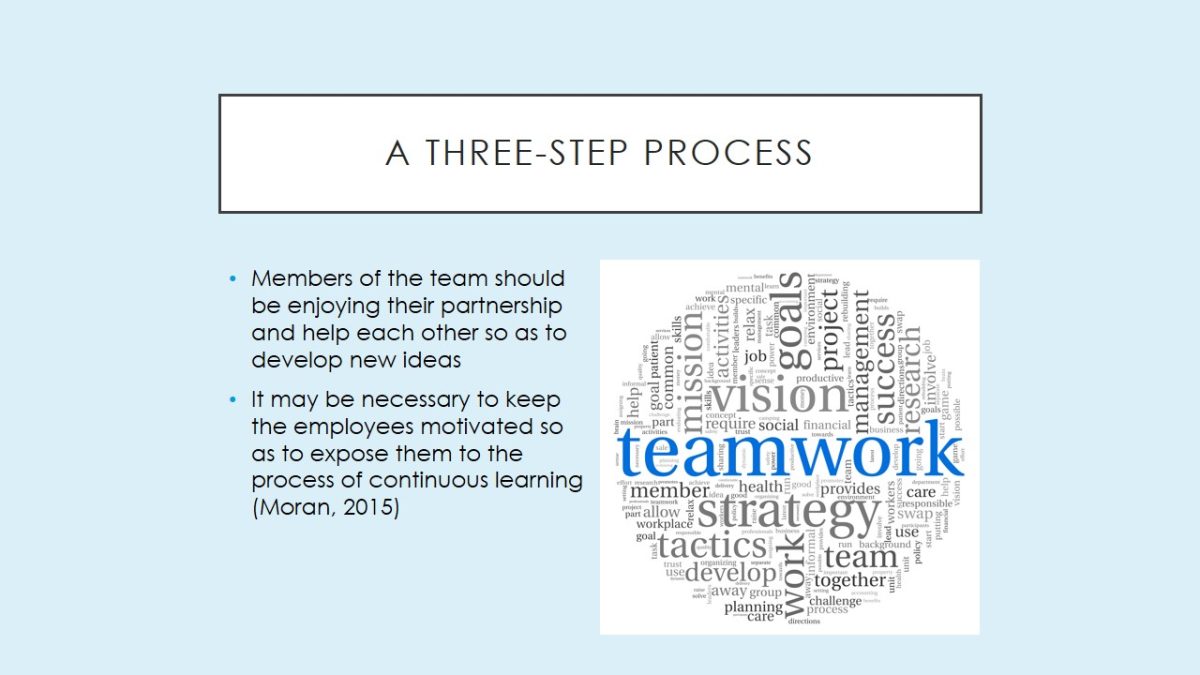
The role of leaders
- They have to deal with the individuals that encumber the team’s efforts to advance (Horowitz, 2014)
- Leaders should be able to use subtle control and influence the team by means of agile principles (Moran, 2015)
- Leaders have to re-organise the team if it is evident that its self-organisation hampers its development (Cooke, 2014)
- A knowledgeable leader is able to influence their team indirectly because they cannot predict the team’s response to the transformational process (Moran, 2015)
Even though self-organising teams tend to work according to their own code of responsibilities, they still have to be controlled. Nevertheless, when it comes to the external influence, not a single self-organising team can evade it. For example, there is a person that makes all the decisions within a self-organised team. If that member of the team keeps making all these decisions on their own, they will encumber the team’s efforts to advance (Horowitz, 2014). In this case, even a private conversation will not change anything. On the other hand, overruling some decisions made by that individual will make the team hesitant and less self-organised.
In this case, it may also be reasonable to add a member to the team that will be able to confront arguable decisions or pose different challenges for the current decision-making individual. In other words, it is critical to re-organise the team if it is evident that its self-organisation hampers its development (Cooke, 2014). A knowledgeable leader is able to influence their team indirectly because they cannot predict the team’s response to the transformational process. Evidently, not a single leader has all the answers, but their key responsibility is to agitate and apply agile methods so as reach the highest level of organisational performance.
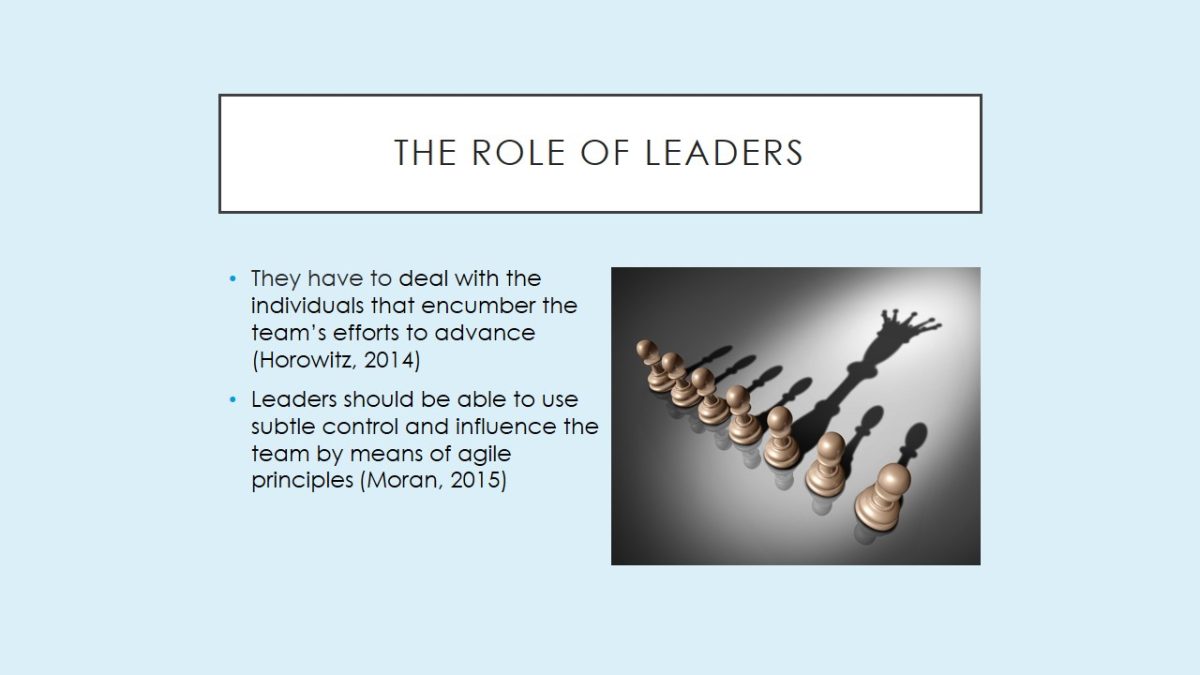
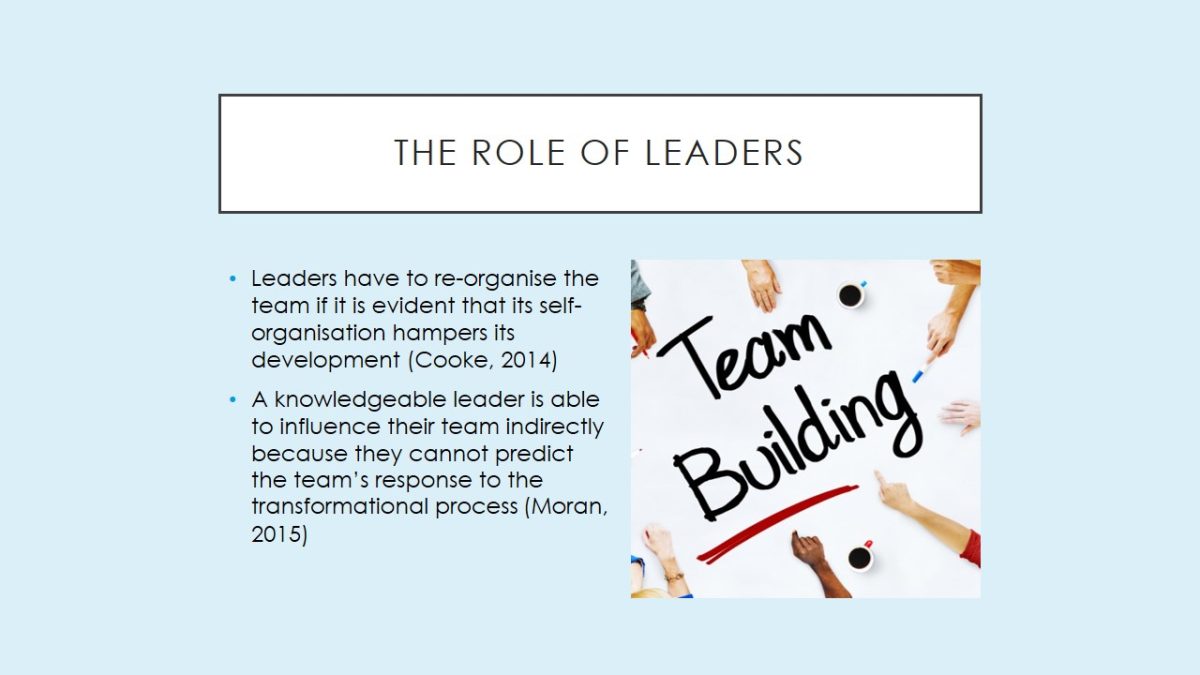
References
- Cooke, J. L. (2014). Agile productivity unleashed: Proven approaches for achieving real productivity gains in any organisation. London, UK: IT Governance.
- Horowitz, M. (2014). Identity and the new psychoanalytic explorations of self- organization. New York, NY: Routledge.
- Moran, A. (2015). Managing agile. New York, NY: Springer.
- Nonaka, I. (1994). A dynamic theory of organizational knowledge creation. Organization Science, 5(1), 14-37. Web.
- Osherove, R. (2016). Elastic leadership. New York, NY: Routledge.
- Persily, C. (2014). Team leadership and partnering in nursing and health care. New York, NY: Springer.
- Schwarz, R. M. (2013). Smart leaders, smarter teams: How you and your team get unstuck to get results. San Francisco, CA: Jossey-Bass.